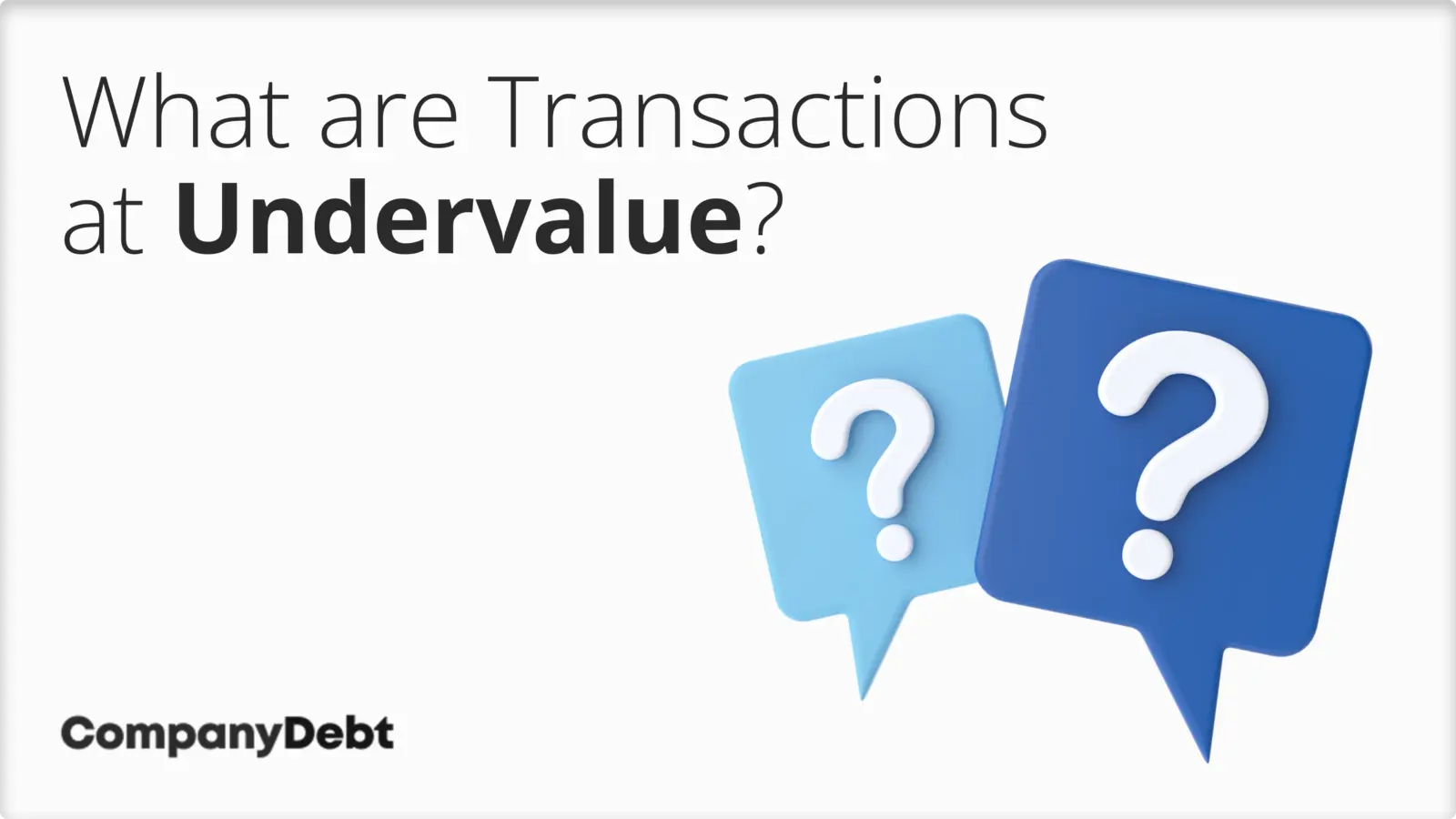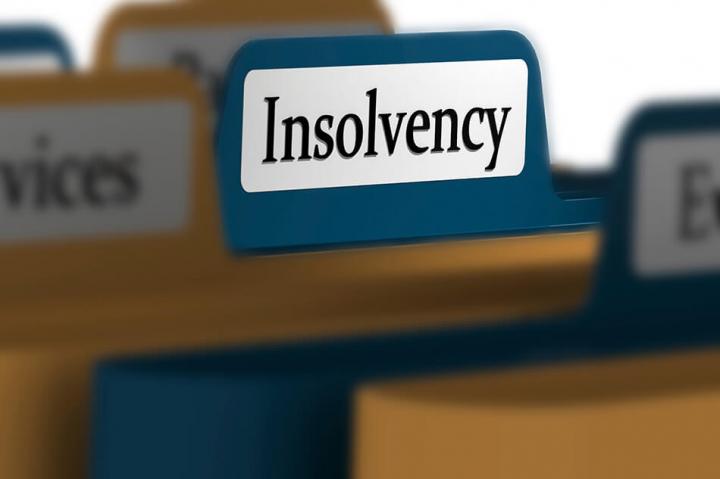
Transactions at Undervalue
- What is a Transaction at an Undervalue?
- Common Examples of Undervalue Transactions
- Legal Framework and Time Limits
- How are Transactions at Undervalue Identified by the IP?
- What are the Potential Consequences for Company Directors if Transactions are Undervare are Discovered?
- Defences and Prevention Strategies
What is a Transaction at an Undervalue?
A transaction at undervalue, as defined in Section 238 of the Insolvency Act 1986, occurs when a company enters into a transaction for a consideration significantly less than its true market value.
Such transactions can take various forms, including:
- Disposition of assets at less than market value
- Gratuitous transfers of company property
- Debt forgiveness without adequate compensation
- Preferential transfers to connected parties
If your company enters insolvency proceedings, an insolvency practitioner will scrutinise your past dealings. They’ll look for any transfers that may have unfairly reduced the company’s assets, potentially harming creditors. This scrutiny can extend back two years from the onset of insolvency.
Even well-intentioned actions can be challenged. The law aims to ensure the fair treatment of all creditors, so any transaction that appears to favour certain parties may be scrutinised.

Common Examples of Undervalue Transactions
As a director, you should be particularly vigilant of the following:
- Asset Sales Below Market Value: This occurs when your company disposes of property, equipment, or other assets at a price significantly below their fair market value. For instance, selling a company vehicle worth £20,000 for £5,000 without justification.
- Debt Forgiveness: Releasing a debtor from their obligations to your company without receiving equivalent value in return may be scrutinised. This is especially pertinent when dealing with connected parties.
- Excessive Remuneration: Paying salaries, bonuses, or other benefits to directors or employees that are disproportionate to their services, particularly when the company is in financial distress.
- Transactions with Connected Parties: Any transfer of assets or provision of services to family members, other companies within a group, or other related entities at less than arm’s length terms warrants careful consideration.
- Assumption of Liabilities: Taking on another party’s debts or obligations without receiving commensurate benefit may be deemed a transaction at undervalue.
It is crucial to note that the court will assess these transactions objectively, focusing on the disparity between the value given and received. The subjective intentions of the parties, while relevant to potential defences, do not determine whether a transaction is at undervalue.
We advise maintaining comprehensive records of all significant transactions, including the rationale behind the agreed terms and any professional valuations obtained. This documentation can prove invaluable should the transaction later be subject to challenge.
Legal Framework and Time Limits
The legal basis for transactions at undervalue is primarily found in Section 238 of the Insolvency Act 1986. As a director, you should be aware of the following key provisions:
- 2-Year Time Period: The court may scrutinise transactions occurring up to two years before the onset of insolvency. This ‘relevant time’ is crucial in determining whether a transaction may be challenged. (For personal claims, it extends to 5 years before the bankruptcy petition.)
- Insolvency Requirement: For a transaction to be vulnerable to challenge, the company must have been unable to pay its debts at the time of the transaction or have become unable to pay its debts as a consequence of the transaction.
- Connected Party Presumption: If the transaction was with a connected party, such as a director or associated company, there is a rebuttable presumption of insolvency. This shifts the burden of proof onto the connected party to demonstrate the company’s solvency at the time.
- Limitation Period: The limitation period for bringing a claim under section 238 is 12 years from the date of the transaction. This period doesn’t start running until the onset of the insolvency procedure (i.e. when the company enters administration or liquidation). If the claim is framed as a simple action to recover money, rather than under section 238, the standard 6-year limitation period applies.
How are Transactions at Undervalue Identified by the IP?
Insolvency practitioners will employ a rigorous process to identify transactions at undervalue. As a director, you should be aware of the following:
- The insolvency practitioner will conduct a thorough examination of the company’s financial records, including bank statements, accounting ledgers, and asset registers.
- All significant transactions within the relevant time period will be scrutinised, with particular attention paid to those involving connected parties or occurring close to the onset of insolvency.
- The practitioner may employ forensic accounting techniques to trace the movement of assets and funds, especially where complex corporate structures are involved.
- Any disparity between the consideration received and the true value of assets transferred will be closely examined.
- You may be required to provide explanations for transactions identified as potentially undervalue. It is crucial to cooperate fully and provide comprehensive responses.
- The insolvency practitioner may seek information from third parties, including counterparties to transactions and professional advisers.
What are the Potential Consequences for Company Directors if Transactions are Undervare are Discovered?
As a director, you must be aware of the significant repercussions that could ensue if a transaction at undervalue is established. The consequences can impact both you personally and your company.
The court possesses extensive powers to restore the position. This may include ordering the reversal of the transaction, necessitating the return of assets or payment of their value to the company. Moreover, you may face personal liability for any losses incurred by the company as a result of the transaction.
In more severe instances, you could be subject to disqualification proceedings under the Company Directors Disqualification Act 1986. Such disqualification can extend for up to 15 years, potentially curtailing your ability to act as a director or be involved in company management.
In exceptional cases involving fraudulent activity, criminal prosecution may be pursued.
It is important to understand that these consequences can apply irrespective of your intentions as a director. The test is objective, focusing on the effect of the transaction rather than its intent.
Defences and Prevention Strategies
As a director, you have several potential defences available if faced with allegations of a transaction at undervalue.
The primary statutory defence is found in Section 238(5) of the Insolvency Act 1986. To succeed, you must demonstrate that:
- The company entered into the transaction in good faith
- It was for the purpose of carrying on the company’s business
- At the time, there were reasonable grounds for believing it would benefit the company
This defence sets a high bar, requiring you to provide evidence of your decision-making process and commercial rationale.
To mitigate risks and strengthen your position, consider implementing these preventative measures:
- Obtain independent valuations for significant assets before transfer or sale
- Maintain comprehensive records of board discussions and decisions
- Seek professional advice when contemplating substantial transactions, especially during financial distress
- Regularly review the company’s financial position to ensure awareness of potential insolvency
How can we help?
If your company might be insolvent and you’re worried about a possible transaction, then stop. You should seek professional insolvency advice before entering into any transactions that do not appear to be for full value and/or selling assets to any third parties that you have some connection with or the company does. For more information, please call our company directors’ hotline on 0800 074 6757 or email info@companydebt.com.








